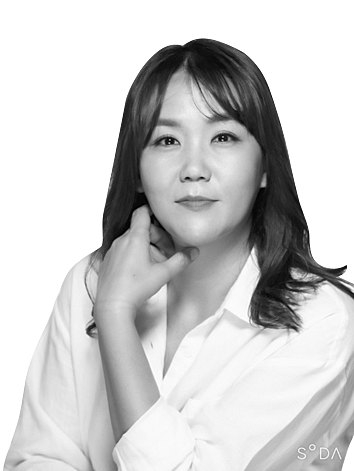From symbol of discrimination to K-pop mecca

Lee Young-hee
The author is a Tokyo correspondent of the JoongAng Ilbo.
On one weekend morning of a spring rain, the entry of the Korea Town in Ikuno-ku, Osaka, Japan, smelled of various tasty fragrances. Korean pancake-like pan-fried vegetable mix beckoned customers to a restaurant. A train of umbrellas lined up for their turn at fried chicken, pancake and kimchi stew shops. A middle-aged Japanese woman said she comes to the town from Sakai City twice a month to buy kimchi.
About a 15-minute walk from the JR Tsuruhashi or Momodani stations brings one to Korea Town. Although, the official location is called “Ikuno [-ku] Korea Town,” it is also known as “Osaka Korea Town.” A 500-meter alley hosts about 120 shops on both sides selling Korean food, cosmetics, and souvenirs of Korean stars.
The Tsuruhashi area used to be where ethnic Koreans who came from Joseon, particularly Jeju Island, during the colonial period settled. It was the setting for the film “Blood and Bones” portraying the tough lives of Koreans and their descendants in Japan. Koreans who came to Osaka looking for jobs voluntarily or forcibly during the colonial period formed a village and marketplaces selling Korean food and goods.
Koreans across Japan visited the town to buy traditional food until the 1990s. With the Hallyu wave from Korean drama fever from 2000s, Japanese started visiting the area. With the third K-wave from recent years, young Japanese in their teens and 20s became regulars. Visitors to the town totaled 2 million last year. Traffic jams are notorious on the roads leading to Korea Town during the weekend.
About 80 percent of the visitors are women and half of them under 30. A twenty-something woman waiting for her turn in front of a fried chicken shop said she visits the town often to buy Korean food and beauty items after she became a fan of BTS. She hopes she could visit Korea for shopping after the Covid-19 situation ends. A Korean descendant who has been running a soondubu (spicy soft tofu stew) restaurant for 13 years said her store added a stew with cheese to meet the taste of female customers. She beamed that her store is packed all day during weekends.
Korea Town in Shin-Okubo in Tokyo mostly houses big shopping malls with famous Korean franchise stores, whereas the one in Osaka bears the traditional Korean marketplace feel. The alleys are narrow, and stores lay out merchandise on the streets. The area looks like a rural marketplace excepting for the Japanese language being used. Merchants are of descendants of oldcomers who came to Japan before liberation doing business in the area for decades. Of 120-some stores, 20 specialize in various types of kimchi.
Since the area has a long history, it is also underdeveloped. The town is made up of three commercial units, and there has been difficulty in upgrading facilities such as toilets and CCTV installation. After lengthy discussion, the district units decided to merge into a limited Osaka Korea Town.
Hong Sung-ik, 65 and a third generation Korean descendant, was made the founding chair. “There had been talks of merging for 20 years, but due to different characteristics of the shops and stubbornness of vendors, the integration process has been difficult,” he said. The rush of tourists has led to the consensus of an integration to address to common needs.
The Osaka Korea Town aspires to upgrade the shops and seek co-prosperity as its goal. It envisions developing the streets from the Tsuruhashi Station leading up to the Korea Town as a mecca of Korean culture in Osaka. A Korea Town festival is scheduled for this autumn.
The Ikuno Ward in the Korea Town houses the greatest number of foreigners in Japan with foreign nationals making up 21.75 percent, including 28,000 ethnic Koreans. Vietnamese, Thai, and other foreigners who also live in the area. With the Korea Town gaining tourism appeal, Ikuno-ku also plans various program to highlight multi-racial and multi-cultural dynamism of the neighborhood.
Hong hopes to build a memorial center of ethnic Koreans who survived various discrimination in Japan. “I hope to show the footprints of ethnic Koreans who have become a part of Japan to young Japanese visiting the area. What was once a symbol of poverty and bigotry can turn into a location of harmony and co-existence,” he added.










with the Korea JoongAng Daily
To write comments, please log in to one of the accounts.
Standards Board Policy (0/250자)